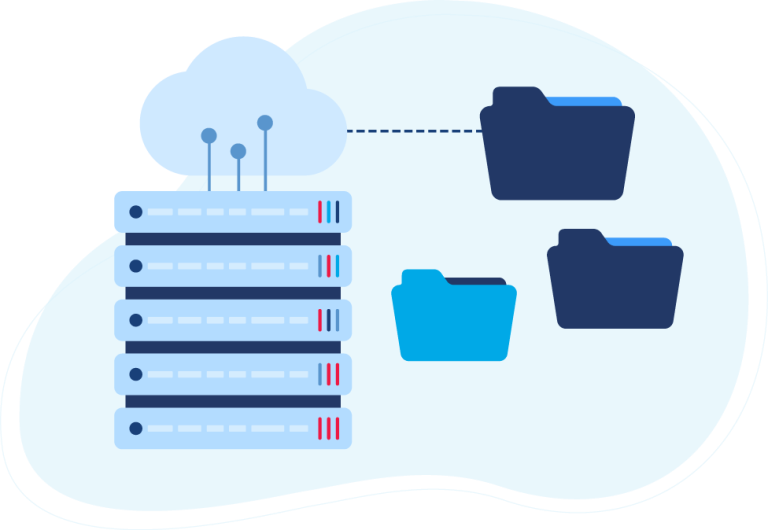If you are considering investing in system integration, this article will help you determine an estimate of how much data integration should cost and your business can reach new heights and grow as per your strategy or goals.
When VL OMNI originally wrote this blog in 2018, the world was a different place. The market and the way we do business have now fundamentally changed. Global economies are stretched and Merchants are in a financially anxious position. Thankfully, there are government programs and aid for Merchants who need it.
The Importance of Investing In The Right Technology
Brands are continuously looking to adapt to the new reality and meet new customer expectations. In order to stay afloat, businesses are investing in technology to strengthen their systems and operations. In some cases, Merchants can benefit from deep discounts applied by technology partners/agencies. This often eases the need to implement a solution that will decrease manual process and operational errors.
However, it is important as a Merchant to understand the value of money, in both economic progress and hardship. Future-proofing your business will require significant investment. Thus, it is essential to understand the benefits and what it takes to implement new technology solutions. Data integration is one of those investments.
No matter what the situation is, having data integration that allows you to free your business of ineffective manual integrations and processes will, in the end, save you money, time, and allow you to grow.
Topics covered on this blog:

Understanding The Value of System Integration
Agile, scalable iPaaS system integration is not only worth the investment but it’s a timely investment to future proof your business. Many scaling businesses with complex and specific integration needs come to VL OMNI. Either by hunting us out specifically or through one of our amazing partners — because they realize that the other solutions out there just won’t cut it, even at a deeply discounted rate.
If you’d like to have a frank and honest discussion about the price of data integration in particular to your business rules and project scope
So, How Much Should Data Integration Cost?
Well, we obviously know what our integration platform costs*, and VL OMNI customers not only know the cost of a reliable integration platform, but also the value — AKA the return on the investment that partnering with VL OMNI brings to merchants.
From getting your free time and weekends back, to saving on charge-backs and penalties, to ultimately freeing your business from ineffective and inefficient integration alternatives, the benefits of great system integration with VL OMNI are apparent to insiders.
But for those out there searching, perhaps for the first time, we will dive into how to determine the cost of business system integration. Plus, discover the benefits of end-to-end integration and the visibility provided by an integration platform. In short, for an up-market data integration solution that fits your business needs, what reference point do you have to work with for cost vs. value? What’s a reasonable spend for great data integration?
Here are 3 things you should consider before investing in a data integration solution:
1. Data integration should not cost $50,000 USD — especially when you have nothing to show for that investment.
This was a particularly painful story shared directly with us by the merchant. After a $50,000** investment in an integration solution and almost a year of development, the merchant still had nothing close to an integration solution in place. They told us they had two choices: continue waiting with the hope that a complete solution is ready at some point, or jump ship and move on. And they (smartly) moved on.
This is an expensive lesson. While we don’t have the full story on why this merchant chose this solution provider or what the project entailed, we can extrapolate a few things. First, since this was a flat-fee cost structure. We can assume that this is a static integration and possibly custom-coded for the business. Integrations like these are static in time — meaning this one wouldn’t have grown along with the company. It’d have worked temporarily.
The Danger of Custom Coded Integrations
If this was a custom coded integration — the huge price tag certainly indicates it is likely an integration frozen in time. The world will not remain in its economic situation forever, so the technology investments you make now need to be resilient to change. Your business deserves to have technology that grows with you through any time, offering flexibility to adapt your integrations as your business changes and scales.
The price tag also alludes to paying developers or programmers to build what is likely a one-off integration. When you see a price tag like this, rolled into a single lump sum with no maintenance structure or fees around it, you’re essentially paying someone’s salary to code the integration from scratch. Maintenance on these integrations is not part of the package. If it is, you’re still paying to manually maintain things. If your business changes, as businesses are meant to do, you’ll have to go back and pay for more custom coding, which is both slow and costly.
Ultimately, the fact that this merchant was willing to walk away from a $50,000 investment tells us that their integration partner was not truly a partner. True partners are in it for the long term and want to see your business succeed — not take your cash and run. VL customers, for example, are on average with us for years — think 5, 10, or even 25 years. We’re in it for the long run and to help our customers do the best they possibly can.

2. Data integration should not cost $90,000 USD — and especially not when the integration is point-to-point and only works in a single direction.
Another example is a real story of a merchant who paid for a single point-to-point integration that only went from one application to another — and not back again! This is an unbelievable amount of money to pay for what we can only assume was a custom-coded project. And for what? An over-glorified plug-and-play integration, which, for the record are either free as bolt-ons to applications you likely already use, or cost less than $100 USD on average.
We can only imagine what was said to convince the merchant that this was a good option. It’s likely a combination of not being an informed advocate for your business’ technology decisions, and being ‘sold’ by an unscrupulous salesperson who likely told the merchant this was the only way to get what they needed.
Again, even during frightful times, sales tactics and un-becoming salespeople can take advantage of your business. It’s important to get expert opinions based on your project scope and business rules. Your integrations should fit your business, not the other way around.

3. The cost of data integration should represent the investment you’re willing to make into your business
In order to streamline processes in your business, connecting applications together in a way that’s meaningful for your business will allow your brand to scale without hindrance. Even though VL OMNI doesn’t make our prices front-facing with good reason*, if you’ve been able to catch the hints dropped in this article, great data integration like what VL OMNI provides to over 300 Merchants — doesn’t cost anywhere near $90,000 or $50,000**.
Our iPaaS structure — a subset of SaaS for integration that simply means we charge a monthly fee. That’s our integration platform cost. This means that there’s no DIY coding, or even any custom coding. That’s just not how our platform was designed. And that’s not how the powerful technology we’ve build our platform on works. That means our Connectors exist already (we build these as part of our own strategy of what the market and our customers need), and our set up period is much shorter than custom coded projects because all we have to do is understand your business and configure the workflows around the Connectors.
Having a monthly fee that’s a fraction of these two prices also means that the maintenance of the integrations is on us. Our integrations are not static entities frozen in time. They’re elastic, they grow and expand with our customers’ needs, and they work for the long-term. If they didn’t, we wouldn’t have customers with us for 5, 10, and even 25 years. And yes, those are actual customers who have been with us that long, and that’s not unusual at all.
*VL OMNI does not publish our pricing, because we don’t force merchants into a boxed solution. Our sales process involves understanding your business and what’s important to you, and no other businesses alike. Want to see what VL OMNI can do for your business? Start a conversation with us here.
**While $50,000-$90,000 is way too much to pay for a one-time spend on a single integration with basic functionalities, it is possible to reach these amounts over a period of months or years on some iPaaS platforms, depending on the merchant’s usage.
Editor’s Note: Originally published on June 21, 2018. This post has been updated for comprehensiveness in February 2021.
 D365 Business Central
D365 Business Central Netsuite
Netsuite


